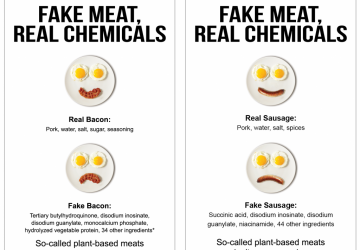At last count, the exact same anti-obesity screed appeared in at least 42 major newspapers yesterday and today, courtesy of the biggest, baddest health nanny on the block: the Robert Wood Johnson Foundation (RWJF). Yesterday, RWJF released the first article in a five-part series distributed free to newspapers across the United States. It’s called “The Shape We’re In,” and it represents one of the Foundation’s opening salvos in the obesity wars. Having already spent more than $265 million between 1997 and 2002 to tax, vilify, and restrict access to adult beverages, RWJF has now made obesity one of eight new priority areas.
Following its anti-alcohol model, RWJF will fund programs and organizations calling for “sin” taxes on foods high in sugar, fat and sodium; warning labels on those foods; a print, radio, Internet, TV, and point-of-purchase “counter-advertising” campaign; and even zoning restrictions on the density of restaurant outlets and convenience stores.
The possibility of RWJF supporting the food-related programs of the Center for Science in the Public Interest (CSPI), in addition to its alcohol program, must leave CSPI’s let-them-eat-lettuce leader, Michael Jacobson, salivating.
Obesity is “forcing what may be a cultural revolution,” according to The Shape We’re In. “Ideas to cut obesity that once sounded extreme are gaining public attention and moving into mainstream thinking.” RWJF is doing its best to foment that “cultural revolution,” where the most extreme — and restrictive — ideas about how to combat obesity become accepted practice. The “community action guide” that accompanies “The Shape We’re In” includes talking points from the source of most extremist ideas on regulating our diets: CSPI.
Speaking of extreme ideas, expect to see some coming from the next four articles that are part of “The Shape We’re In.” For example, take a gander at this passage in article number three:




